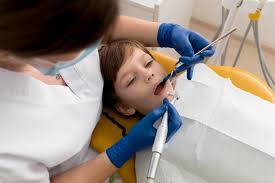A child’s dental visit is a routine healthcare appointment designed to monitor oral health in children. Pediatric dentistry incorporates specific procedures and protocols tailored to developing teeth, gum tissues, and oral habits. Understanding the standard procedures and expectations for these visits helps parents and caregivers prepare their children for a comfortable and effective experience.
What Should I Expect When I Take My Child To The Dentist?
Most pediatric dental visits begin with a review of the child’s dental and medical history, followed by an oral examination. The dentist assesses the development of teeth and jaws, checks for cavities, discusses oral hygiene habits, and recommends preventive measures. Dental professionals use firendly measures to guide children through the examination and any indicated procedures.
During the visit, the dentist may also perform a dental cleaning to remove plaque and tartar buildup, which helps prevent cavities and gum disease. If necessary, fluoride treatments or dental sealants might be applied to protect the teeth and strengthen enamel. The dentist will provide tailored advice on nutrition, brushing, and flossing techniques based on the child’s specific needs. These visits aim to build a positive association with dental care and establish a strong foundation for lifelong oral health.
How Often Should I Take My Kid To The Dentist?
The American Academy of Pediatric Dentistry recommends dental check-ups for children every six months, beginning with the appearance of the first tooth or by the child’s first birthday. More frequent visits may be advised for children at higher risk for dental caries or other oral health concerns. Establishing good dental habits at a young age will help prevent future issues.
What to Expect From Pediatric Dentistry
The dentist may apply fluoride treatments or dental sealants to help strengthen enamel and protect vulnerable areas of the teeth. Parents are also provided with education on proper brushing and flossing techniques for their child, as well as personalized advice on nutrition and habits such as thumb sucking or pacifier use. These visits help identify any dental concerns at an early stage, ensuring the child’s oral health is well-maintained as they grow.
What Procedures Are Most Common For Children?
Pediatric dentistry treatments routinely include a range of procedures, including:
- Dental Cleanings: Removal of plaque, tartar, and stains from teeth, typically followed by polishing and fluoride application to strengthen enamel.
- Cavity Detection and Fillings: Visual and radiographic examination identifies early decay. Restorations (fillings) use tooth-colored materials to repair affected teeth.
- Dental Sealants: Thin, protective coatings applied to the chewing surfaces of molars to reduce the risk of decay in hard-to-clean areas.
- Fluoride Treatments: Professional application of concentrated fluoride to reinforce enamel and prevent cavities.
- Oral Health Education: Instruction on brushing technique, flossing habits, diet, and injury prevention.
Other procedures, such as orthodontic assessments, space maintainers, or emergency care for dental trauma, may be included as needed.
What Should I Bring for My Child’s Dental Appointment?
Preparing for a pediatric dental appointment involves bringing:
- Any relevant dental or medical records, including a list of current medications, allergies, and previous dental treatments.
- Comfort items for younger children, such as a favorite toy or blanket.
- Dental insurance information or payment method.
Ensure your child has brushed their teeth prior to the visit to facilitate an effective examination.
Schedule Your Child’s Dental Visit
Regular pediatric dental care supports lifelong oral health. To arrange an appointment or discuss your child’s dental needs further, contact a pediatric dental office. You can schedule your child’s first dental visit as soon as their first tooth appears, or by their first birthday. From there, regular appointments are recommended every six months for check-ups and cleanings.
- FREHF – The Revolutionary Future Of Human-Centered Technology!
- Adsy.Pw/Hb3 – Boost Your SEO And Drive More Traffic!
- Fitness Based Vacations By Timeshealthmage.com!
- TimesHealthMag Tips For Improving Sleep Quality – Expert Advice For Better Rest!
- How TimesHealthMage Helps Improve Your Lifestyle Habits!


Leave a Reply